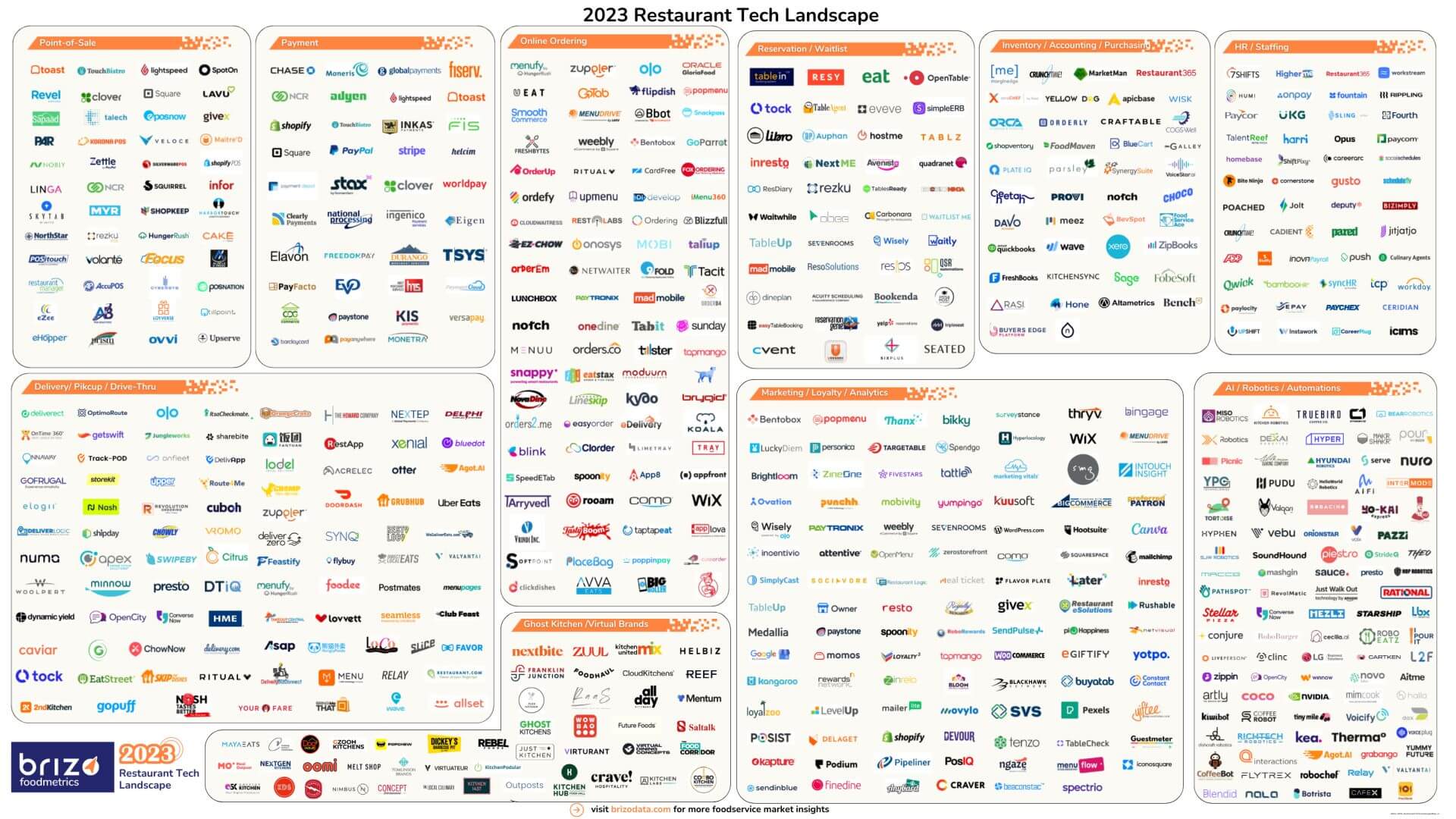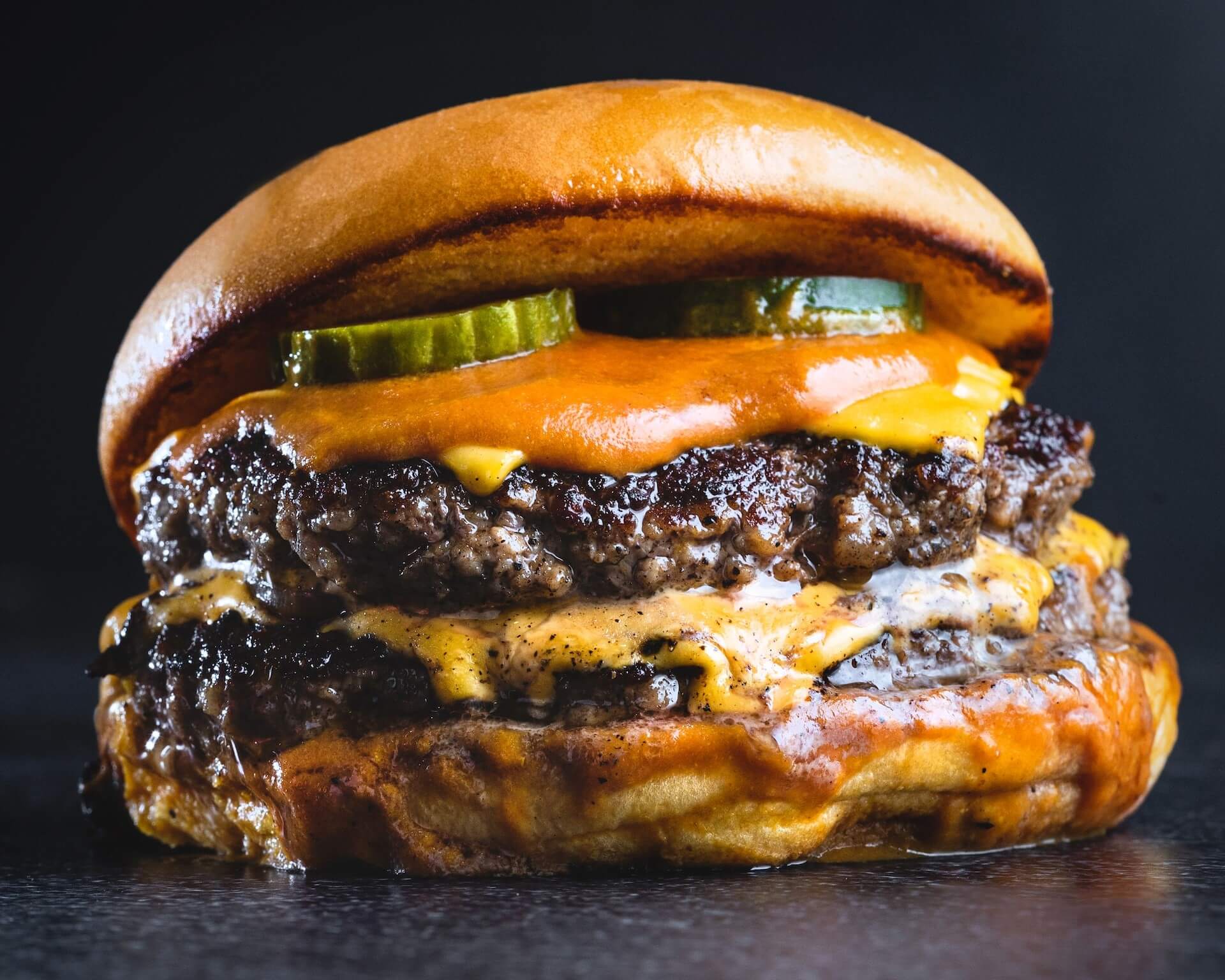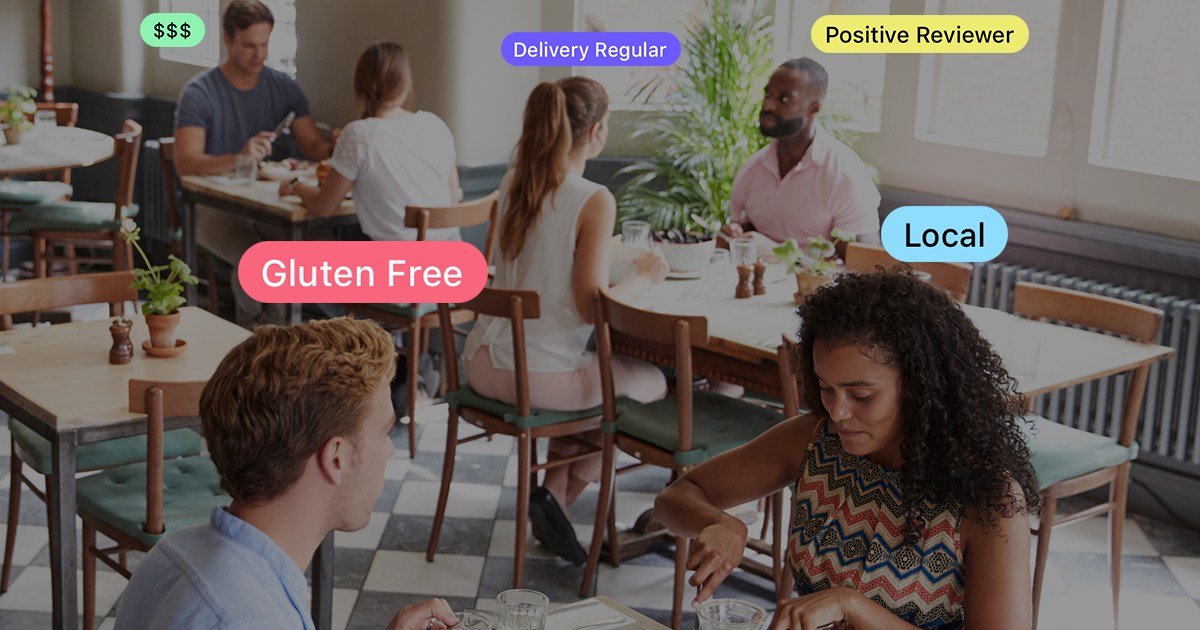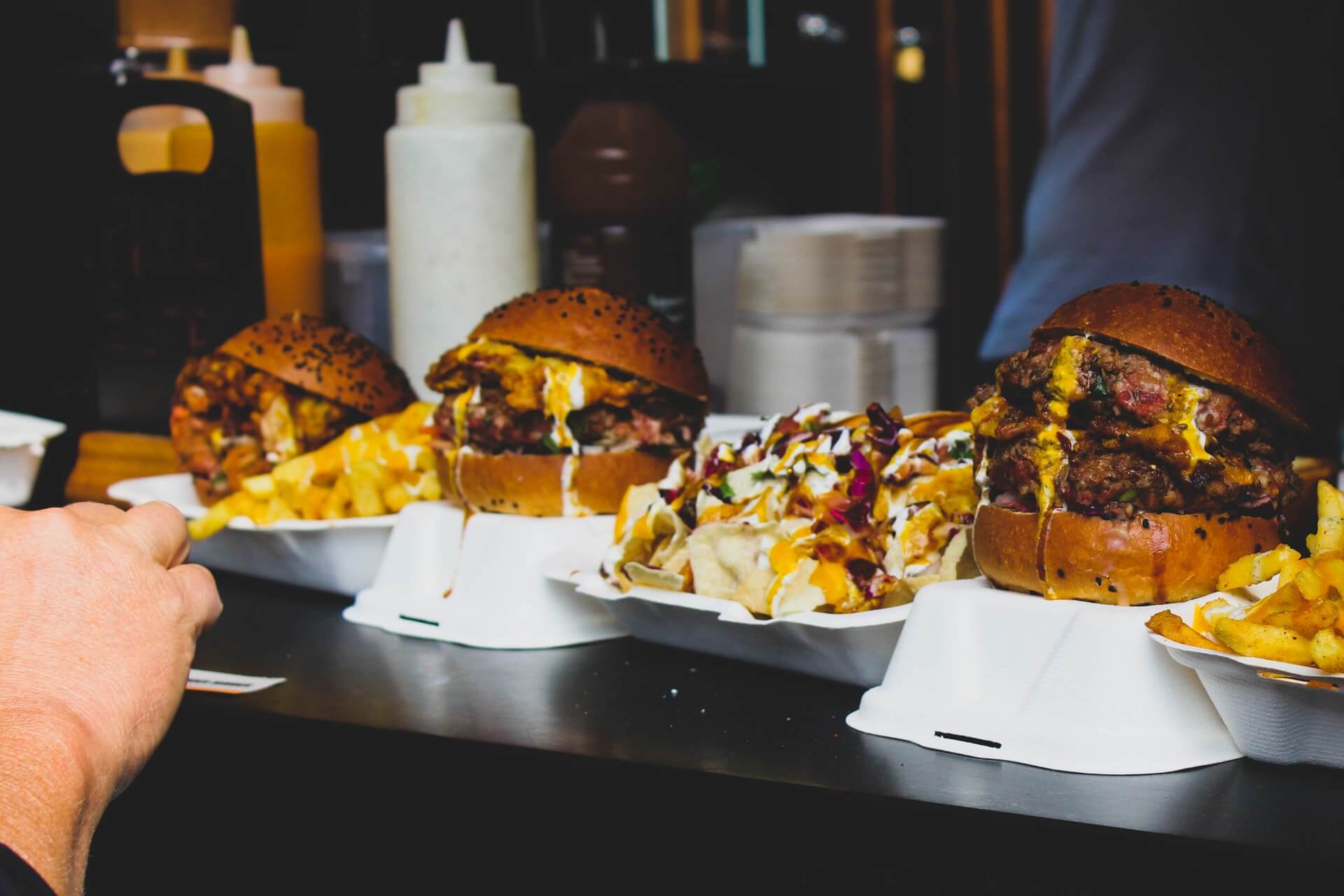Infographic Shows Massive Hospitality Industry Tech Growth
by David Klemt

An infographic from Brizo FoodMetrics puts the explosive growth of the hospitality industry technology landscape on display.
It appears that operators, once largely hesitant to embrace new technology, are seeking it out. So, too, it seems, are guests. Intriguingly, many guests expect restaurants, bars, and hotels to innovate technologically.
In a sign of this change, SpotOn is predicting 2023 to be the year when independent operators upgrade their POS systems.
And that’s just one area where tech companies are innovating for our industry. As their infographic shows, Brizo FoodMetrics identifies ten areas of innovation:
- POS systems
- Payment platforms
- Online ordering solutions
- Reservation and waitlist platforms
- Inventory, accounting, and purchasing solutions
- Human resources and staffing
- Delivery, pickup, and drive-thru tech
- Marketing, loyalty, and analytics platforms
- Artificial intelligence, robotics, and automation
- Ghost kitchen and virtual brand tech
Looking just at Brizo’s POS section, they list 48 platforms as part of their “2023 Restaurant Tech Landscape.” That’s four dozen POS systems, and that’s not even every platform available to operators.
Some will be familiar to operators—Toast, TouchBistro, Clover—as they’re basically synonymous with POS systems. Others, like Tillpoint and OVVI, may be less known. However, that doesn’t mean they’re not worthy of research and consideration.
Explosive Growth and Innovation
Again, the Brizo infographic doesn’t list every single available platform. For instance, I don’t see OpenSimSim under the HR/Staffing section. But the fact that there are still dozens of other platforms—more than in the POS section—shows that tech companies finally want their share of the hospitality pie.
This is, of course, beneficial for operators and their teams for several reasons. One such reason is innovation.
On one hand, the established platforms must innovate to fend off competitors. And on the other hand, upstarts must prove themselves to operators. In other words, new platforms must show they’re not vaporware; they have longevity and won’t abandon their own platform any time soon; they’ll update constantly; they’re simple to learn and use; they integrate with other systems; and that they’re worth an operator’s money and time.
We’re just two months into 2023. Imagine what the 2024 tech landscape is going to look like. And bear in mind, this is a restaurant-focused map—there are categories like property management systems for hotels that aren’t included.
If you’re in the market for a new POS system, want to upgrade scheduling, or are just curious about where the industry is heading, check out the infographic below. Select a few brands that are unfamiliar and look them up.

To view this infographic on the Brizo FoodMetrics website, click here.
Image: Possessed Photography on Unsplash




